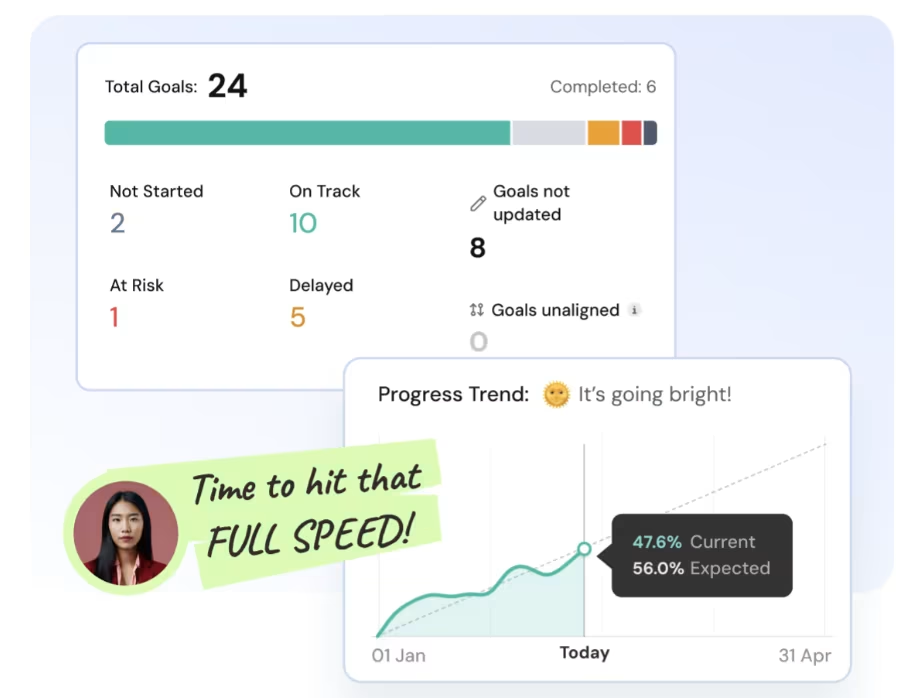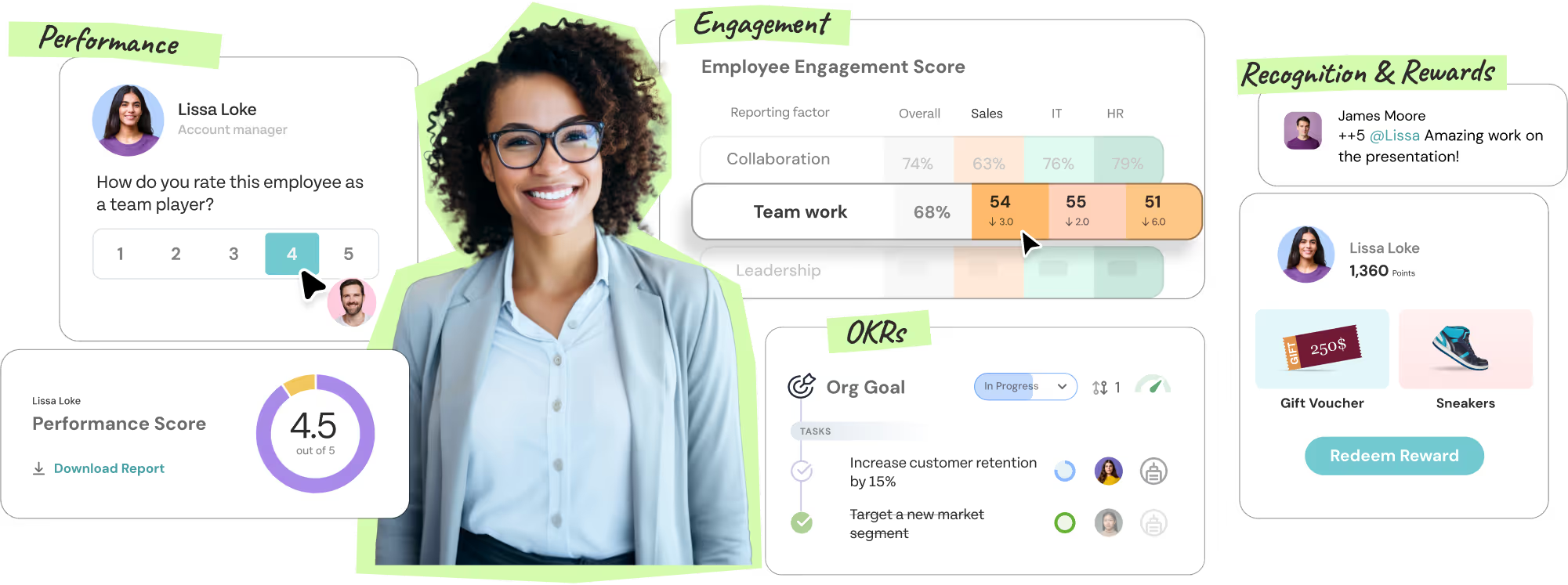Every organisation dreams of having a workforce filled with high-performing employees—those special individuals who consistently deliver outstanding results, stay engaged even when challenges arise, and inspire their colleagues to reach new heights. The truth is, these exceptional performers are surprisingly rare. Research reveals that in most organizations, they make up only 5–30% of the workforce. Yet here's what's remarkable: this small group drives an outsized share of productivity and innovation.
But here's the thing: finding and nurturing these high performers isn't just about celebrating individual stars. It's about understanding what makes them tick so you can create a culture where excellence becomes the norm rather than the exception. When you know what to look for, you can spot potential high performers early, develop existing talent more effectively, and build teams that consistently exceed expectations.
In this exploration, we'll dive deep into twenty-three traits that set high-performing employees apart from the crowd.
The Foundation: Internal Drive and Emotional Intelligence
1. Relentless drive and motivation
The most distinguishing feature of high-performing employees is their internal engine—that relentless drive that pushes them through obstacles and toward ambitious goals. These individuals don't need external pressure to perform; they're fueled by an intrinsic motivation to excel.
What sets these driven employees apart is how they approach their work. They set ambitious goals, obsess over results, and constantly look for ways to improve.
For hiring managers, the key is identifying candidates who speak passionately about past projects or personal achievements. Once they're on your team, you can fuel this drive by providing clear goals, regular feedback, and opportunities to stretch beyond their comfort zone.
2. Emotional intelligence and empathy
While technical skills might get someone hired, emotional intelligence often determines who thrives. High-performing employees combine self-awareness, self-regulation, empathy, and social skills to navigate workplace dynamics with remarkable grace.
This matters more than you might think. Teams run on relationships, and high emotional intelligence fosters trust while reducing conflict. When people can focus on results instead of navigating unspoken tensions, productivity soars. Research from Workhuman shows that high-potential employees are often emotionally intelligent, and Gallup's findings reveal that highly engaged teams show 78% less absenteeism.
The beautiful thing about emotional intelligence is that it's contagious. When leaders demonstrate empathy and emotional awareness, they inspire loyalty and create environments where others feel safe to be vulnerable and authentic. This psychological safety becomes the foundation for exceptional performance.
Adapting and Communicating in a Dynamic World
3. Adaptability and resilience
In today's rapidly changing business environment, the ability to pivot quickly isn't just valuable—it's essential. High performers don't cling to old methods or become paralyzed by uncertainty. Instead, they adapt, learn, and bounce back from setbacks with remarkable resilience.
The pandemic provided a perfect example of this trait in action. Companies with agile talent pools successfully shifted to remote work and new business models, while others struggled. High-potential employees are celebrated for their exceptional adaptability, viewing change as an opportunity rather than a threat.
Building this capability requires encouraging experimentation and rewarding learning from failure. When employees see change as a chance to grow rather than something to fear, innovation naturally follows.
4. Proactive communication
One trait that consistently separates high performers from the rest is their approach to communication. They don't wait to be asked for updates—they proactively share progress, flag potential risks, and ask clarifying questions before problems escalate.
This proactive stance prevents misalignment and wasted effort. Research shows that top performers excel at communicating with their peers, understanding that information flow is critical for achieving collective goals. They're also exceptional listeners, taking in feedback and making adjustments accordingly.
The key to fostering this behavior is creating transparent channels—like regular stand-ups or shared dashboards—and celebrating people who speak up early about obstacles. When communication flows freely, teams move faster and achieve better results.
The Learning and Problem-Solving Mindset
5. Continuous learning and curiosity
High performers approach each challenge as a learning opportunity. They actively seek feedback, stay current with industry trends, and continuously expand their skill sets. This isn't just professional development—it's a fundamental mindset that drives everything they do.
Smart managers foster this curiosity by funding training, offering cross-functional projects, and clearly linking learning to career advancement. When employees are given time for exploration and reflection, they bring fresh insights back to their work.
To systematically develop these learning-oriented behaviors, explore our comprehensive guide to 11 Performance Management Strategies To Build High-Performing Teams.
6. Problem-solving and critical thinking
Perhaps the most valuable skill in knowledge work is the ability to approach problems analytically. High-performing employees don't just identify issues—they break them down, generate hypotheses, and test solutions systematically.
This analytical approach pays dividends. Top performers in sales deliver 2.6 times the ROI of low performers, partly because they can anticipate objections and adjust strategies on the fly. In other fields, they achieve outsized outcomes by thinking through challenges rather than reacting emotionally.
You can cultivate this trait by encouraging employees to ask "why" five times for any problem, introducing structured problem-solving frameworks, and recognizing well-reasoned solutions. When leaders reward thoughtful questions as much as quick answers, they build a culture of intellectual rigor.
Results and Relationships: The Performance Balance
7. Results-oriented mindset
High performers understand a fundamental truth: activity without results is just busy work. They focus relentlessly on outcomes, measuring success based on impact rather than hours logged or tasks completed.
This orientation toward results creates tremendous value. Research shows that top-performing employees can be worth 91% more than their peers. This premium stems directly from their ability to translate effort into meaningful business impact.
Leaders can instill this mindset by defining clear metrics and rewarding outcomes rather than time spent. Public dashboards, OKR frameworks, and transparent goal tracking help keep everyone anchored on what really matters. ThriveSparrow's Goals platform makes this effortless with real-time OKR tracking and automated alignment across all organizational levels.

Understanding how to build this results-focused environment is crucial—learn more about How High-Performance Culture Affects Morale and Productivity
8. Positive attitude and professionalism
The energy that high performers bring to their work is infectious. They maintain optimism and composure even under pressure, treating colleagues with respect and projecting confidence without arrogance.
This positive attitude influences entire teams. When team members uplift one another, collaboration improves and creativity flourishes. Negativity, by contrast, can spread quickly and undermine engagement across the organization.
Nurturing this positivity requires celebrating small wins, addressing burnout proactively, and demonstrating gratitude regularly. When managers model optimism, they help their teams reframe challenges as opportunities for growth.
ThriveSparrow's Kudos makes celebrating small wins effortless with instant peer recognition, appreciation points, and seamless integrations—turning gratitude into an automated culture-builder.

Excellence in Execution
9. Time management and prioritisation
In our age of constant notifications and competing priorities, the ability to focus on what matters most has become a superpower. High-performing employees know how to allocate their time effectively, identifying critical tasks and minimizing distractions.
The Harvard Business Review statistic that 20% of employees generate 80% of output underscores how effective prioritization compounds productivity. Without this discipline, even the most talented individuals risk burning out or neglecting high-impact work.
Supporting effective time management means helping employees craft weekly plans, set boundaries around deep work, and use tools like the Eisenhower Matrix. The goal isn't to glorify overwork but to recognize those who deliver high-quality output sustainably.
10. Integrity and ethical judgement
High performers are guided by a strong moral compass. They do the right thing even when no one is watching, admit mistakes readily, and take full accountability for their actions.
This integrity is more than just nice to have—it's essential for building trust. Ethical breaches can devastate a company's reputation, while consistent integrity creates the foundation for delegation and autonomy.
The Power of Connection and Ownership
Moving beyond individual excellence, high performers understand that sustainable success comes through relationships and shared responsibility. They've mastered the delicate balance between driving their own performance and elevating those around them.
11. Collaboration and team orientation
Even the most talented individual contributor can't achieve company-wide goals alone. High performers instinctively know when to lead and when to support, sharing knowledge freely and viewing collective success as their own success.
The importance of this trait can't be overstated. Research from Workhuman reveals that 86% of employees blame lack of teamwork when they fail to achieve positive results. Collaboration multiplies individual strengths and mitigates weaknesses, creating outcomes no single person could achieve alone.
Smart organizations encourage collaboration through cross-functional projects, knowledge-sharing sessions, and systems that reward team achievements. When roles are clearly defined and collective intelligence is valued, magic happens.
12. Ownership and accountability
High performers take complete responsibility for their actions and outcomes. They don't make excuses or shift blame when things go wrong. Instead, they own projects from start to finish and consistently deliver on their promises.
This ownership mentality builds tremendous trust. When leaders have confidence that employees will take responsibility, they can delegate important tasks and focus on strategy rather than micromanagement. The trait also reduces organizational friction, as accountability thrives when it's safe to admit mistakes and learn from them.
Fostering ownership requires giving employees genuine autonomy, clearly defining scope and expectations, and treating mistakes as learning opportunities rather than reasons for punishment.
Strategic Vision and Stakeholder Focus
13. Strategic thinking
The ability to see the bigger picture separates good employees from great ones. High performers naturally align their work with organizational mission and anticipate long-term implications of their decisions.
In complex business environments, tactical wins can sometimes undermine strategic objectives. High performers elevate discussions and ensure that current actions lay the groundwork for future success. This strategic perspective also supports succession planning, as high potentials often emerge from those who can connect dots across functions.
Developing strategic thinking requires exposing employees to broader business contexts, involving them in strategic planning sessions, and providing mentoring opportunities. Job rotations and cross-functional projects also help broaden perspectives.
Final Thoughts
No employee walks into work as a high performer. Traits like ownership, curiosity, and resilience are shaped by the environment you build around them.
That’s where people-first leadership makes all the difference. When goals are clear, feedback is consistent, and recognition is genuine, excellence stops being rare—it becomes routine.
ThriveSparrow helps teams get there. From setting aligned goals and sharing real-time feedback to celebrating every win, it turns performance into a daily practice rather than a yearly review. Because high performance isn’t found—it’s nurtured.

See how ThriveSparrow helps teams turn potential into performance. Try free for 14 days!!
FAQs
1. What defines a high-performing employee?
A high-performing employee consistently delivers exceptional results while demonstrating strong soft skills like emotional intelligence and adaptability. They contribute positively to team culture and create impact that far exceeds that of average employees.
2. How can managers identify high performers?
Look for individuals who take initiative, exceed goals, communicate proactively, and adapt well to change. Data such as performance metrics, peer reviews, and engagement scores help confirm your observations, but watching for these behavioral patterns is equally important.
3. Are high performers and high-potential employees the same?
Not necessarily. High performers excel in their current roles, while high-potential employees have the capacity and desire to take on broader responsibilities. Many high-potential employees are high performers, but exceptional performance doesn't automatically indicate leadership potential.
4. How can organizations retain their high performers?
Provide meaningful career development opportunities, recognize achievements genuinely, and foster deep engagement. Research shows that high performers' intentions to stay increase significantly when they see clear growth opportunities and feel aligned with organizational values.
5. What role does company culture play in cultivating high performers?
Culture is absolutely critical. A supportive, inclusive environment that values feedback and continuous improvement attracts and retains high-performing employees. Without the right cultural foundation, even naturally high performers can become disengaged or burn out over time.
















